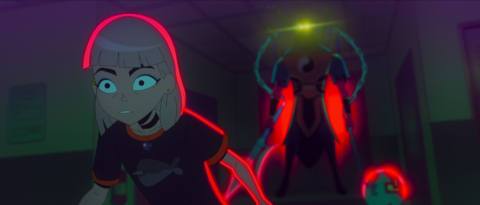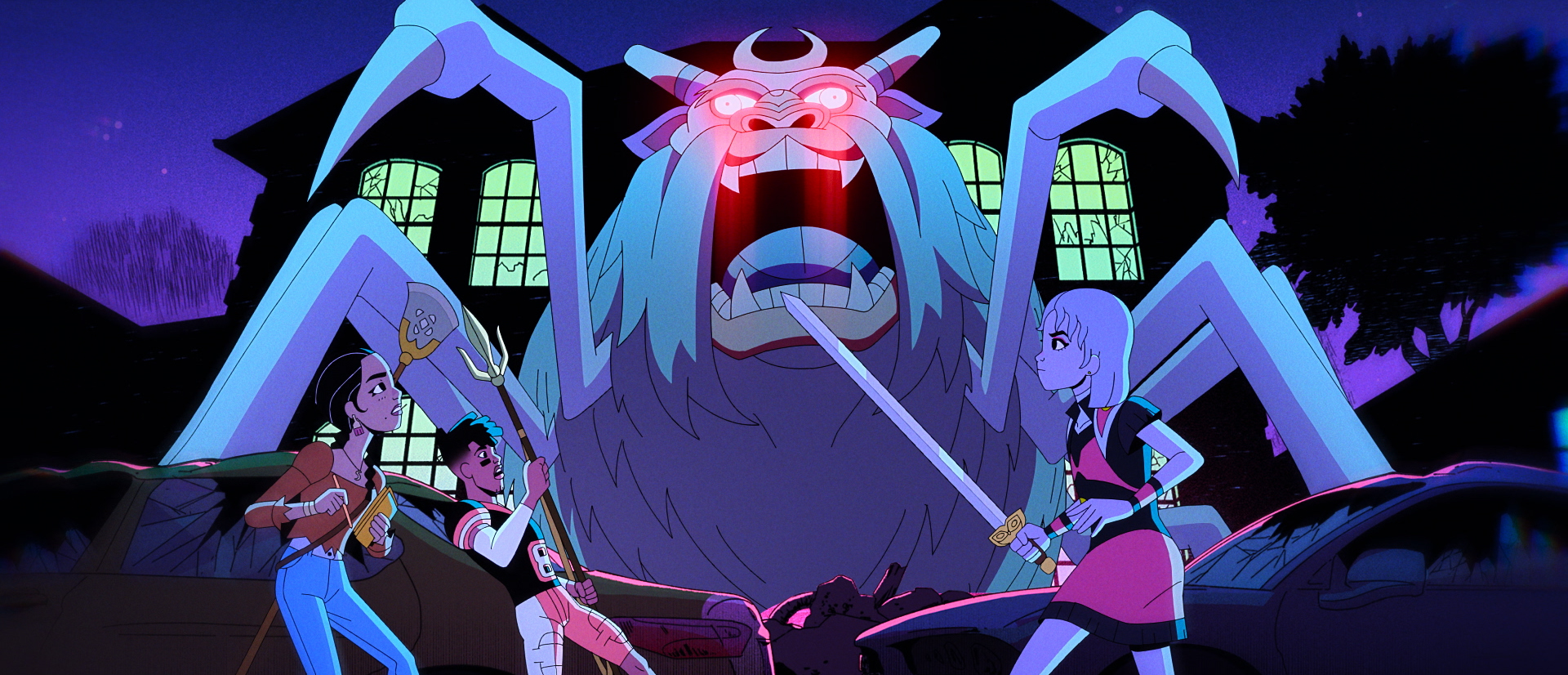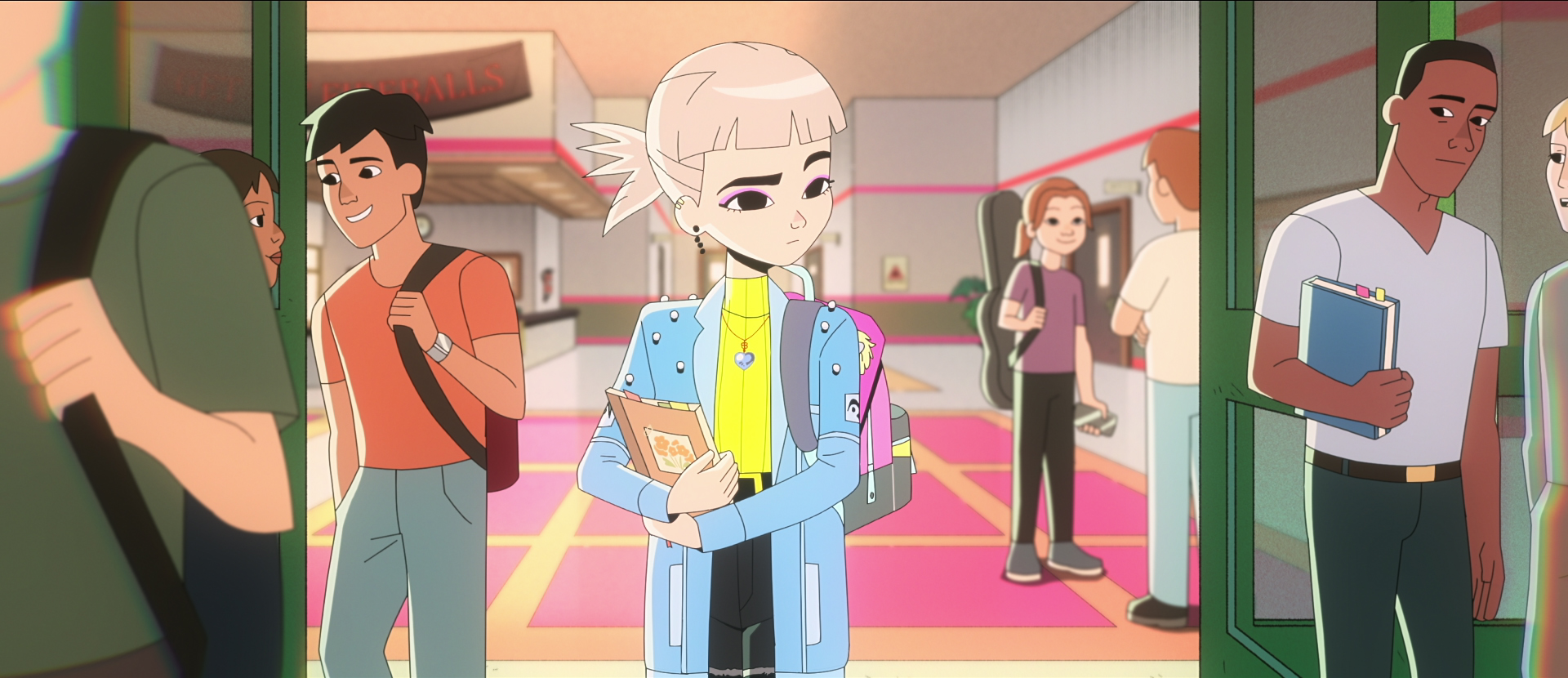
I love a good show about teenagers fighting supernatural entities while also facing the mortifying ordeal of being a high school student. So Netflix’s Jentry Chau vs. the Underworld, which not only sees a superpowered teenage girl battle demons but also draws from Chinese mythology, seems like it was created in a lab just for me. From the first trailer, I had high expectations. With bright, bold colors and character designs, compelling character relationships, and some very funky monsters and action sequences, it really checked all my boxes.
But there’s one specific scene that I can’t stop thinking about, because it so perfectly exemplifies the tone of this show and why it works so well.
[Ed. note: This post contains spoilers for Jentry Chau vs. the Underworld.]

Jentry Chau vs. the Underworld kicks off when 16-year-old Jentry (Ali Wong) learns that a demon is after her for the powers she’s suppressed for most of her life. She must return to her hometown in Texas with her great-aunt Gugu (Lori Tan Chinn) in order to close a portal to the underworld and prevent more monsters from wreaking havoc in the world. All the while, she tries to fit in with her new (old?) classmates and slowly learns more about her own past and Gugu’s refusal to reveal more about her parents.
About halfway through the show, Jentry discovers that Kit (Woosung Kim), the new boy at school with big, dreamy eyes, is actually a Painted Skin demon from Chinese mythology. This means that he’s actually a long-limbed shadowy demon who must construct elaborate disguises out of human skin to conceal his true form. Jentry is initially hurt by this revelation, but she eventually seeks his help to create a skin form in her image for a heist.
Cue a montage where the two of them carefully sew together a Jentry skin in Kit’s dimly lit workshop while a soft romantic song plays. Kit cuts into a roll of flesh so that it best replicates Jentry’s body, and gently tilts her face up so he can measure her chin. Jentry is mildly disgusted when Kit rifles through a bin of body parts and asks him to warn her when he picks the eyes, to which he replies he already knows the exact match for her eyes, because he’s imagined them so often — and Jentry blushes.

It’s a bit gross. It’s incredibly intimate. It’s uncanny, yet super romantic. It’s adorably reminiscent of a budding high school romance, and also like something out of The Silence of the Lambs. But it’s emblematic of how showrunner Echo Wu has marvelously leaned into the wonderfully weird, both with the paranormal elements and the more grounded stakes.
The show leans pretty hard on the more terrifying aspects of Chinese mythology, like a trip to Diyu, the Daoist version of hell, where souls are tortured for eons. The bright colors and cartoonish character designs keep the show firmly planted in PG territory, but it does get a bit freaky, in a good way. At one point, for instance, the house ghosts need to generate some more ectoplasm, so one of them volunteers to be brutally maimed — off screen, but with some screaming — in order to generate just a splash of magical ghost fluid. And even with those darker elements, the tone never gets too dire, and a lot of the fun comes from the weird situations and paranormal entities that Jentry and her friends encounter.
And because Wu is tapping into a cultural mythos that American animation hasn’t fully explored, none of the supernatural plotlines feel overdone (do we really need another broody vampire when we can have a Painted Skin demon?). American cartoons have long flirted with Chinese mythology, without actually delivering. American Dragon: Jake Long and The Life and Times of Juniper Lee, two animated shows that aired in the mid-2000s, also featured a young Chinese American protagonist guided by an elderly relative to battle monsters — but both shows primarily prioritized Western mythology, only incidentally pulling in Chinese legends. Jentry Chau does the reverse: By default, everything Jentry encounters is from Chinese mythology, mixing in other cultural perspectives without assuming that the default is Western. It’s a unique lens, and one that really lets the show shine and avoid any trite cliches.

But even with the fun paranormal side, Wu never loses sight of the show’s more realistic threads. At the end of the day, Jentry is a teenage girl who just wants to be normal. Her relationships with her friends, her secretive great-aunt, and her own self might be colored by the paranormal, but they all feel very rooted in realism. The scene with Kit works so well because even though it’s a demon making a skin costume, it’s also about teenage crushes and complicated feelings (and the fact that those complicated feelings stem from your crush actually being a demonic creature). Jentry Chau vs. the Underworld certainly isn’t the only high school supernatural romp out there, but Wu takes care to balance the fantastical elements with the real ones.
Still, the show works so well because Wu isn’t afraid to get weird. As both a coming-of-age story and a supernatural show, Jentry Chau could easily fall into some cliched genre pitfalls. But Wu doesn’t let that happen, simply by embracing the funkier beats and really letting them sing. It’s in the little details in the background, like Jentry’s Lisa Frank leopard poster and Gugu’s crocs. And it’s also in the bigger scenes, like that romantic moment between Jentry and Kit, set against the sewing of a flesh suit. Now that’s something special — and the whole show is a special, weird gem that sparkles with neon intensity.
Jentry Chau vs. the Underworld is available to stream on Netflix now.
